|
Size: 22
Comment:
|
Size: 2593
Comment:
|
| Deletions are marked like this. | Additions are marked like this. |
| Line 1: | Line 1: |
| Calibration Products | = eROSITA Calibration Products = == ARFs and RMFs == The ARFs were composed of (i) QE measurements for a prototype eROSITA CCD with a 200 nm on-chip Al filter at BESSY, (ii) calculated effective area measurements of one eROSITA mirror assembly (based on ray tracing and averaged over the FoV), and (iii) calculated filter transmissions. They contain the effective areas which result from selecting all valid patterns; the loss of sensitivity which results from selecting only specific patterns is taken into account in the normalization of the RMFs. [[attachment:arf01_100nmAl_200nmPI_sdtq.fits|ARF for 100 nm Al + 200 nm PI]] [[attachment:arf01_200nmAl_200nmPI_sdtq.fits|ARF for 200 nm Al + 200 nm PI]] [[attachment:arf01_200nmAl_sdtq.fits|ARF for 200 nm Al]] The RMFs were derived from measurements with a prototype eROSITA CCD with a 200 nm on-chip Al filter at BESSY, which were processed at a low energy threshold of ~50 eV. It is likely that the energy resolution after launch will be somewhat lower, due to the need to raise the low energy threshold (for telemetry reasons) and due to radiation damage (which will increase with time). Due to the presence of the on-chip filter these are "type b" RMFs (see below). The RMFs for singles, doubles, triples, and quadruples contain the energy dependent pattern fractions in their normalizations. [[attachment:rmf01_s.fits|RMF for singles]] [[attachment:rmf01_d.fits|RMF for doubles]] [[attachment:rmf01_t.fits|RMF for triples]] [[attachment:rmf01_q.fits|RMF for quadruples]] [[attachment:rmf01_sdtq.fits|RMF for all valid patterns]] The RMFs were kept small (1024 x 1024) by adjusting the bin size along the channel energy axis to the spectral resolution below ~8 keV and to the expected photon statistics above ~8 keV. The fact that the observed energies in the photon event file are coded as floating point numbers makes it possible to apply such an adaptive binning. In the ARFs and RMFs, the bin size along the energy axis has been reduced near instrumental absorption edges and around important astrophysical emission regions (see below). {{attachment:arf01.jpg|effective areas|width=600}} {{attachment:pat01.jpg|pattern fractions|width=600}} {{attachment:bin01.jpg|ARF and RMF binning|width=600}} {{attachment:arfrmf.jpg| |width=600}} {{attachment:flt01a.jpg| |width=600}} {{attachment:flt01b.jpg| |width=600}} {{attachment:effarea-comparison.png|effective area comparison | width=600}} Comparison of the initial (red) and current (black) ARFs, provided by Jan Robrade. |
eROSITA Calibration Products
ARFs and RMFs
The ARFs were composed of (i) QE measurements for a prototype eROSITA CCD with a 200 nm on-chip Al filter at BESSY, (ii) calculated effective area measurements of one eROSITA mirror assembly (based on ray tracing and averaged over the FoV), and (iii) calculated filter transmissions. They contain the effective areas which result from selecting all valid patterns; the loss of sensitivity which results from selecting only specific patterns is taken into account in the normalization of the RMFs.
ARF for 100 nm Al + 200 nm PI ARF for 200 nm Al + 200 nm PI ARF for 200 nm Al
The RMFs were derived from measurements with a prototype eROSITA CCD with a 200 nm on-chip Al filter at BESSY, which were processed at a low energy threshold of ~50 eV. It is likely that the energy resolution after launch will be somewhat lower, due to the need to raise the low energy threshold (for telemetry reasons) and due to radiation damage (which will increase with time). Due to the presence of the on-chip filter these are "type b" RMFs (see below). The RMFs for singles, doubles, triples, and quadruples contain the energy dependent pattern fractions in their normalizations.
RMF for singles RMF for doubles RMF for triples RMF for quadruples RMF for all valid patterns
The RMFs were kept small (1024 x 1024) by adjusting the bin size along the channel energy axis to the spectral resolution below ~8 keV and to the expected photon statistics above ~8 keV. The fact that the observed energies in the photon event file are coded as floating point numbers makes it possible to apply such an adaptive binning. In the ARFs and RMFs, the bin size along the energy axis has been reduced near instrumental absorption edges and around important astrophysical emission regions (see below).
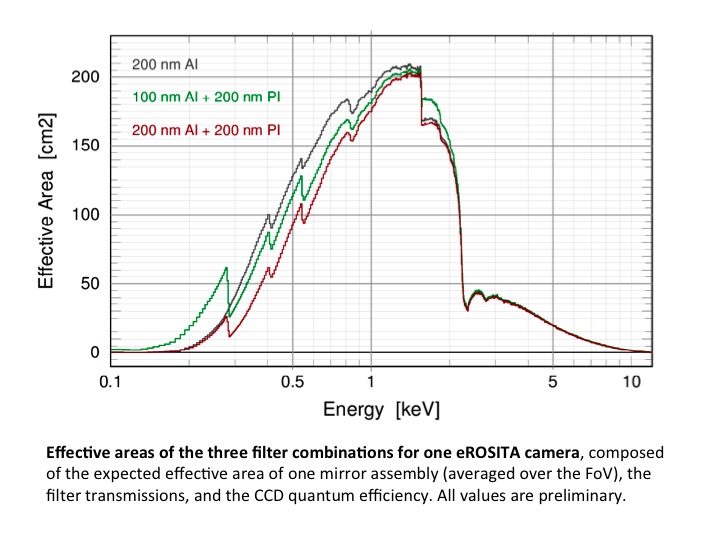
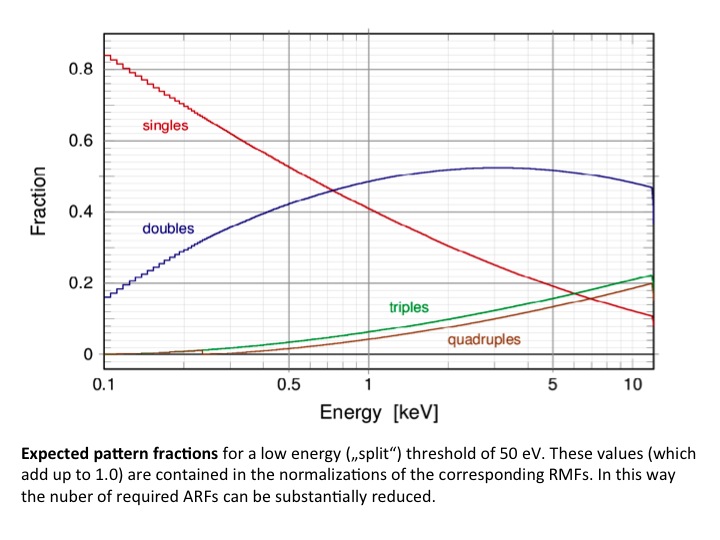
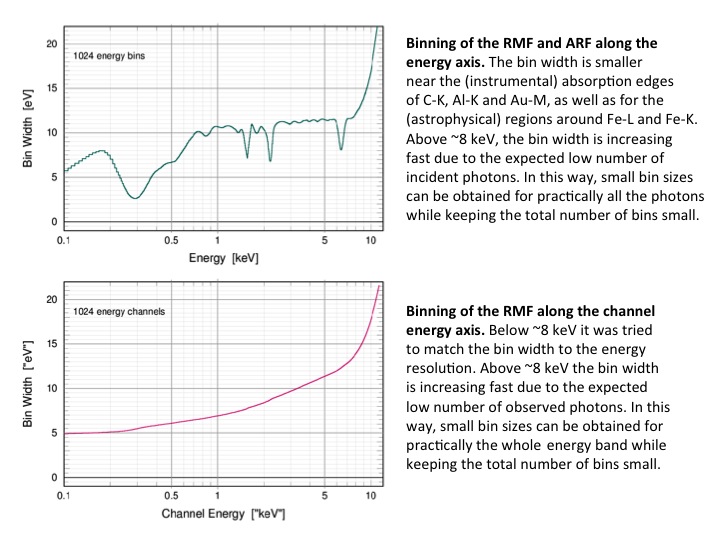
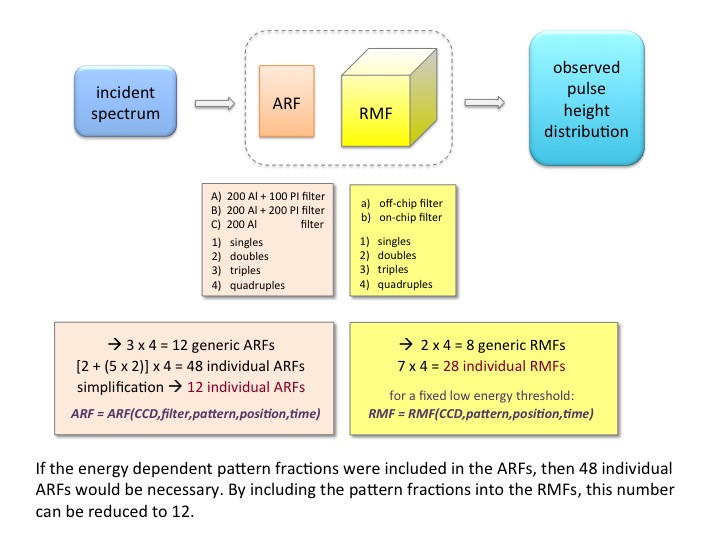
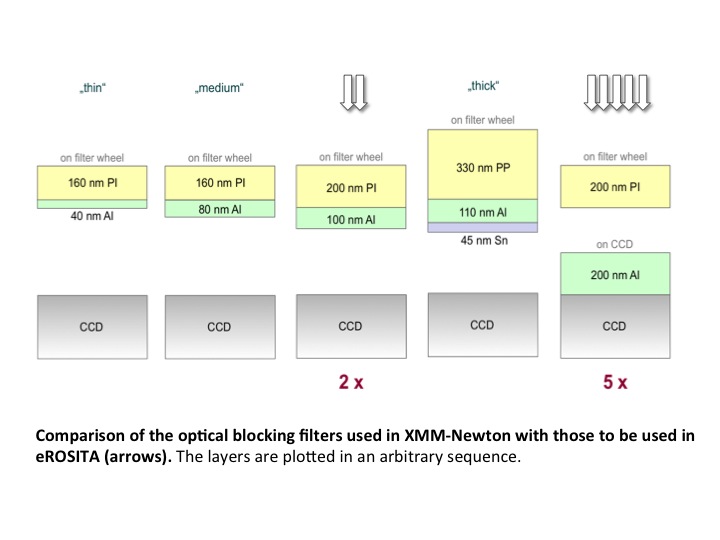
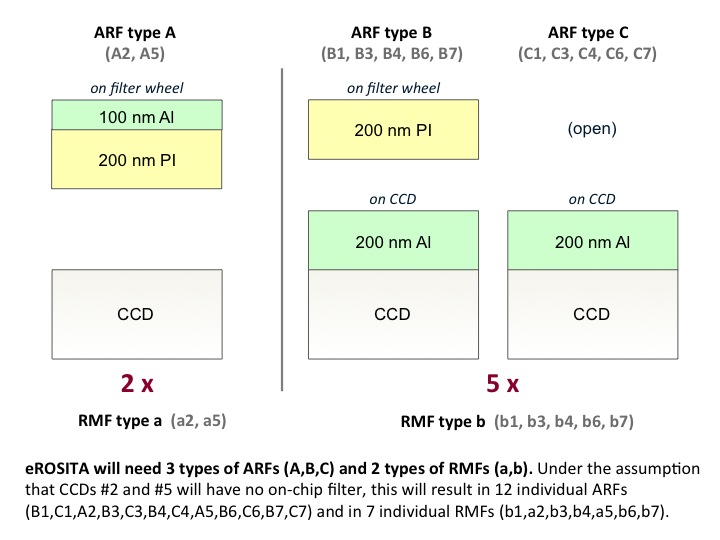
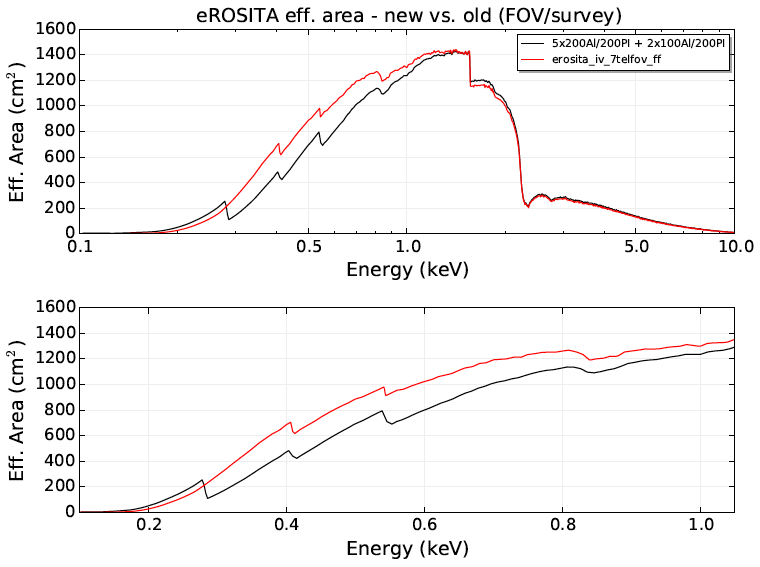
Comparison of the initial (red) and current (black) ARFs, provided by Jan Robrade.